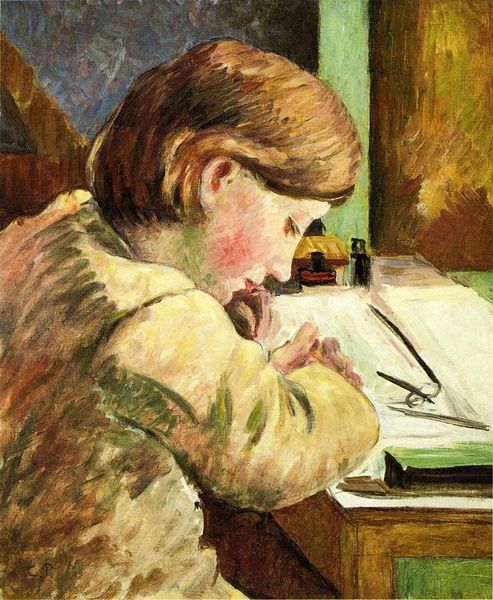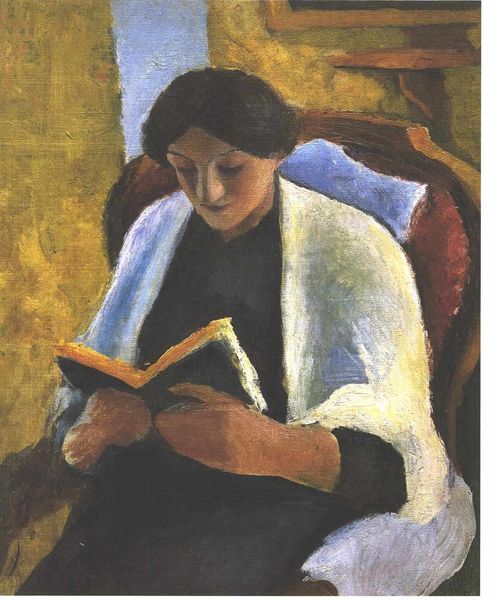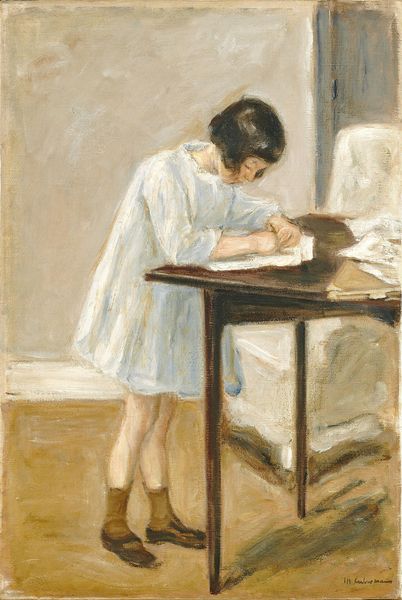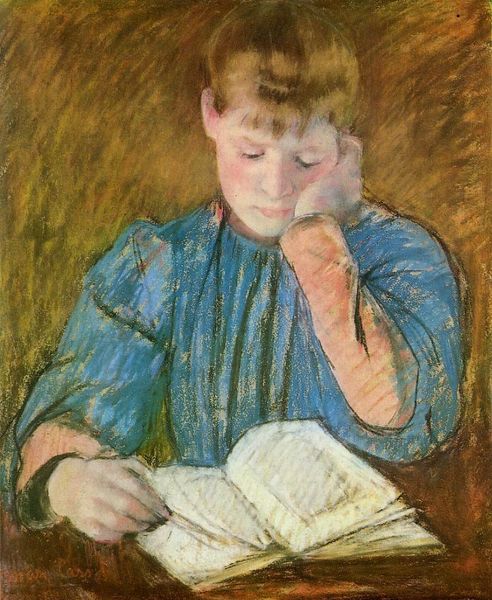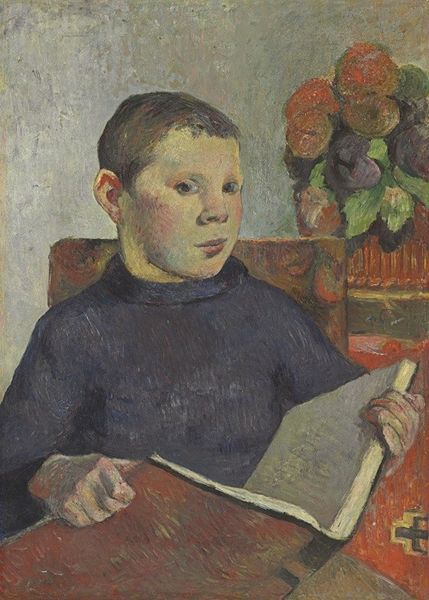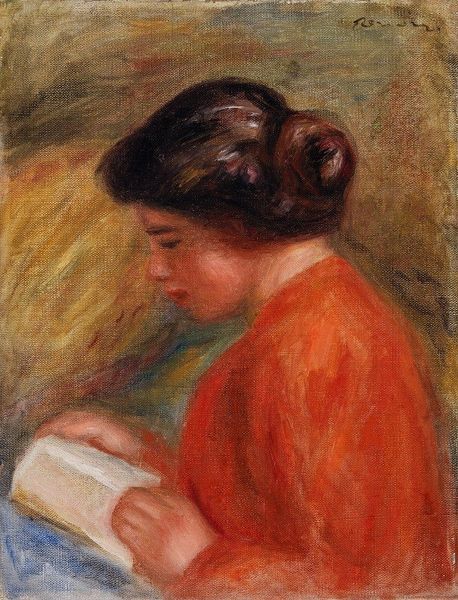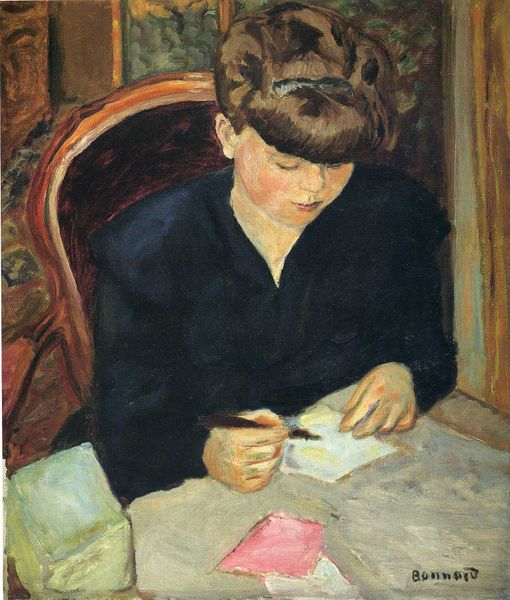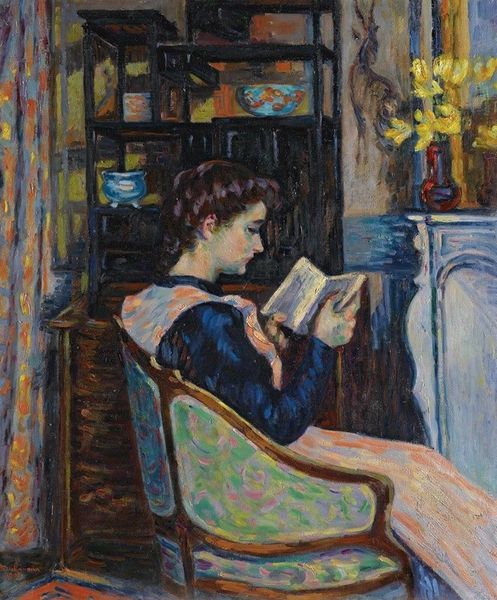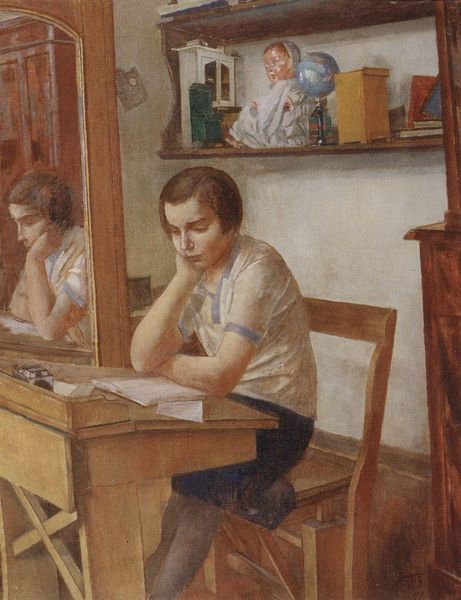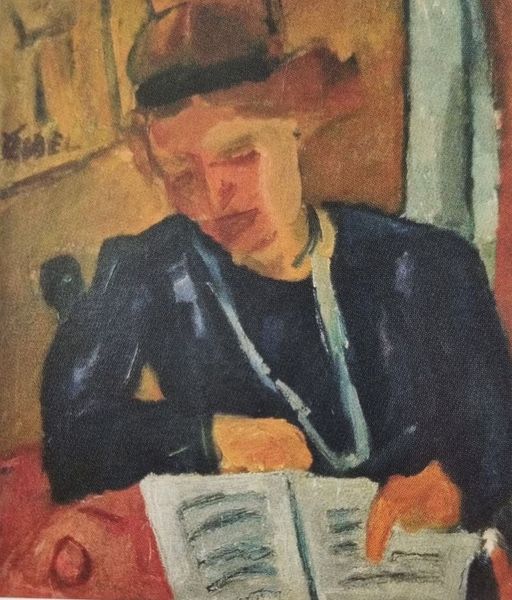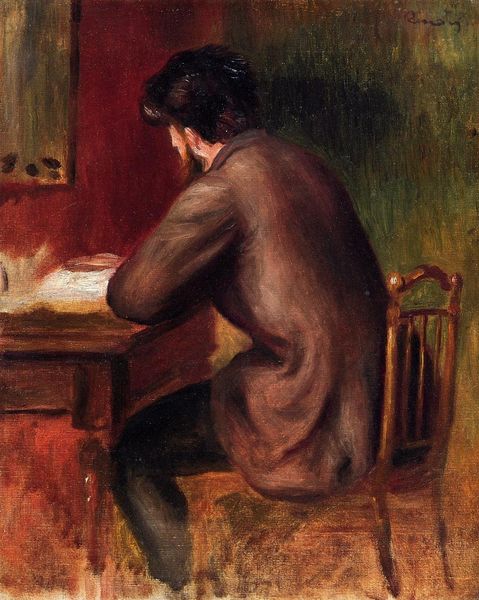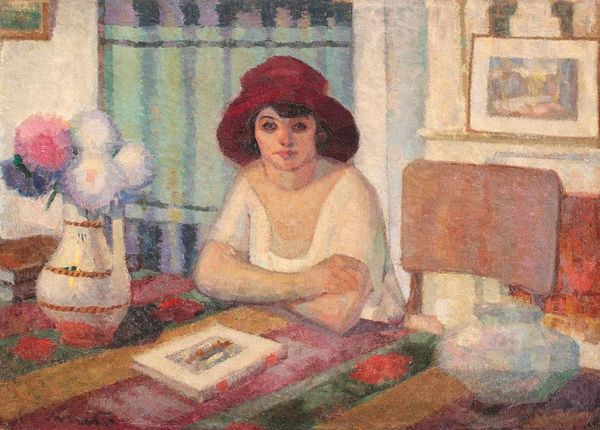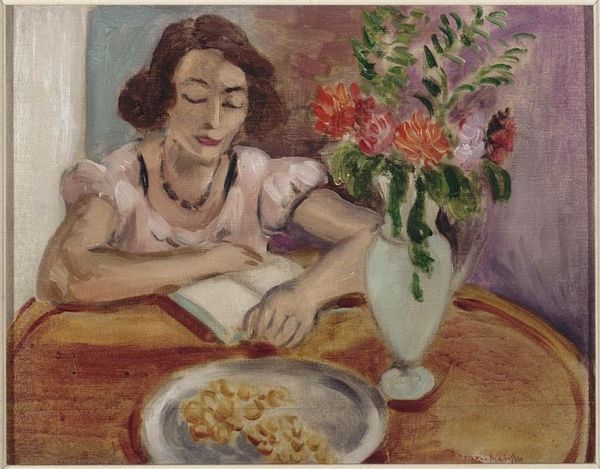
Copyright: Public domain
Editor: Stefan Dimitrescu’s "Margareta Drawing (Girl of the Author)" from 1927 is quite captivating. It feels so intimate, like we're intruding on a private moment. Oil paint on canvas gives a certain depth and warmth. How do you interpret this piece, especially considering its social context? Curator: The intimacy you feel is carefully constructed. Consider Dimitrescu’s position within the Romanian art scene of the 1920s. There was a growing movement toward national specificity in art, seeking to define a Romanian identity. Do you notice anything in the painting that might reflect that push for cultural definition? Editor: I suppose the patterned background feels somewhat folkloric. Is that intentional, to create a specific sense of place? Curator: Exactly! The background hints at traditional Romanian textiles or ceramics. Dimitrescu isn't just painting a portrait; he's embedding his subject within a specific cultural framework. He is not just capturing her likeness; what is he trying to express about the relationship of individuals to culture? Also, reflect on who gets represented, and how. What choices did Dimitrescu make regarding the representation of women? Editor: That's a very interesting perspective. It shifts the painting from a simple domestic scene to something with wider social commentary. It also highlights the role of the artist in actively shaping a cultural narrative, which seems relevant even today. Curator: Precisely. And looking at art this way reminds us that even seemingly private moments are always intertwined with larger socio-political forces. Editor: I agree. It’s fascinating to consider how Dimitrescu used something as intimate as a portrait of his daughter to explore themes of national identity. Curator: Indeed. Analyzing art from a historical lens deepens our appreciation and helps us recognize art's public and political role.
Comments
No comments
Be the first to comment and join the conversation on the ultimate creative platform.
